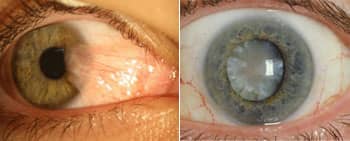We are all aware of the harmful effects of the sun on our skin but UVA and UVB radiation is just as damaging to our eyes. The World Health Organisation recommends wearing a good pair of sunglasses, even on a cloudy day, to protect eyes from the ultraviolet radiation that you cannot see or feel. In Australia they talk about slip, slop, slap, wrap. Slip on a top, slap on a cap, slop on some sun cream and the ‘wrap’ stands for wrapped sunglasses! Put them on, your eyes are so important, our senses are the wonderous things which connect us to the world.
Bigatmo sunglasses filter out 100% of harmful UVA, UVB (and UVC) rays. This is important because today more UV rays are reaching the earth because of the reduction in the ozone layer. Everyone needs the right sun protection for their eyes and this becomes even more important for sports enthusiasts, pilots and those who spend time outdoors in high risk environments such as snow and water. A grassy surface reflects about 10% of the sun’s rays, a sandy beach about 15% and water about 25%, but a snow-covered surface can reflect at least 80%. The intensity of UV rays also increases with altitude, because the reduction in absorption factors is inversely proportional. It is estimated that the intensity of the sun’s rays increases by between 6% and 8% every 1,000 meters, and at very high altitudes reaches 12% every 1,000 meters.
Ultraviolet radiation
There are three types of UV radiation:
- UVA (315-400 Nm) – These are low energy rays that cause ageing, they are deeply penetrating and not blocked by the ozone layer.
- UVB (280-315 Nm) – These are more powerful rays with the energy to burn. They are partially absorbed by in the atmosphere and the ozone layer but, as this is reduced, they become more damaging.
- UVC (100-280 Nm) – These are the most damaging rays but they are completely absorbed by the ozone layer and do not reach the earth’s surface.
High energy blue light
Blue light is also a hot topic these days. The wavelength range for blue light is adjacent to UV and broadly falls into two categories with a dividing point at about 435 to 450 Nm.
Wavelengths above 450 Nm are considered important for both seeing the colour blue and also for helping to regulate the circadian rhythm. Shorter wavelength blue light are considered to be high energy and are associated with some types of Macular Degeneration.
The macular is at the the part of our retina that is responsible for our central vision, it has no blue receptors and is designed to be protected by a special filter in our eyes. Most modern diets exclude certain essential ingredients that are required to build and maintain this filter, allowing high energy blue light to reach the macular and damage to occur over time.
Protect yourself
- Wear sunglasses with high quality lenses to protect eye health.
- If they don’t bear CE markings, don’t buy them.
- Very dark lenses can prevent the pupil constricting. The pupil may dilate and therefore let more harmful UV rays into the eye when the sunglasses are not UV protective.
- Sunglasses should block out 75 – 90% of visible light and 99 – 100% of UVA and UVB rays.
- Wrap around sunglasses help prevent light and UV from getting behind the lenses and in to your eyes.
- High impact resistant lenses are obviously much safer.
- Light coloured eyes (blue, grey or green) need more protection.
Eye damage
Studies show that exposure to UVA & UVB radiation can contribute to the risk of the following eye disorders:
- Pterygium – A benign growth on the eye surface.
- Macular Degeneration – Damage to the central vision area due to cumulative UV radiation.
- Cateracts – Responsible for one half of 35 million cases of blindness worldwide. It is a cloudiness of the eye lens caused by long term over exposure to UV radiation.
In addition there are other disorders which are also associated with UV exposure:
- Dry eye syndrome – The heat and the sun can both cause dryness in the eye: they evaporate the lachrymal film, the protective veil that covers the cornea and provides a natural form of protection for the eye.
- Keratitis – Symptoms include intense pain and difficulty in opening the eyes. Fixed, prolonged exposure to the sun (for instance sunbathing) heats up and completely dries the eye and causes serious problems to the epithelial cells.
- Conjunctivitis – Puffy, red eyes that burn and itch are the signs of conjunctivitis, which can also be caused by exposure to strong winds.

